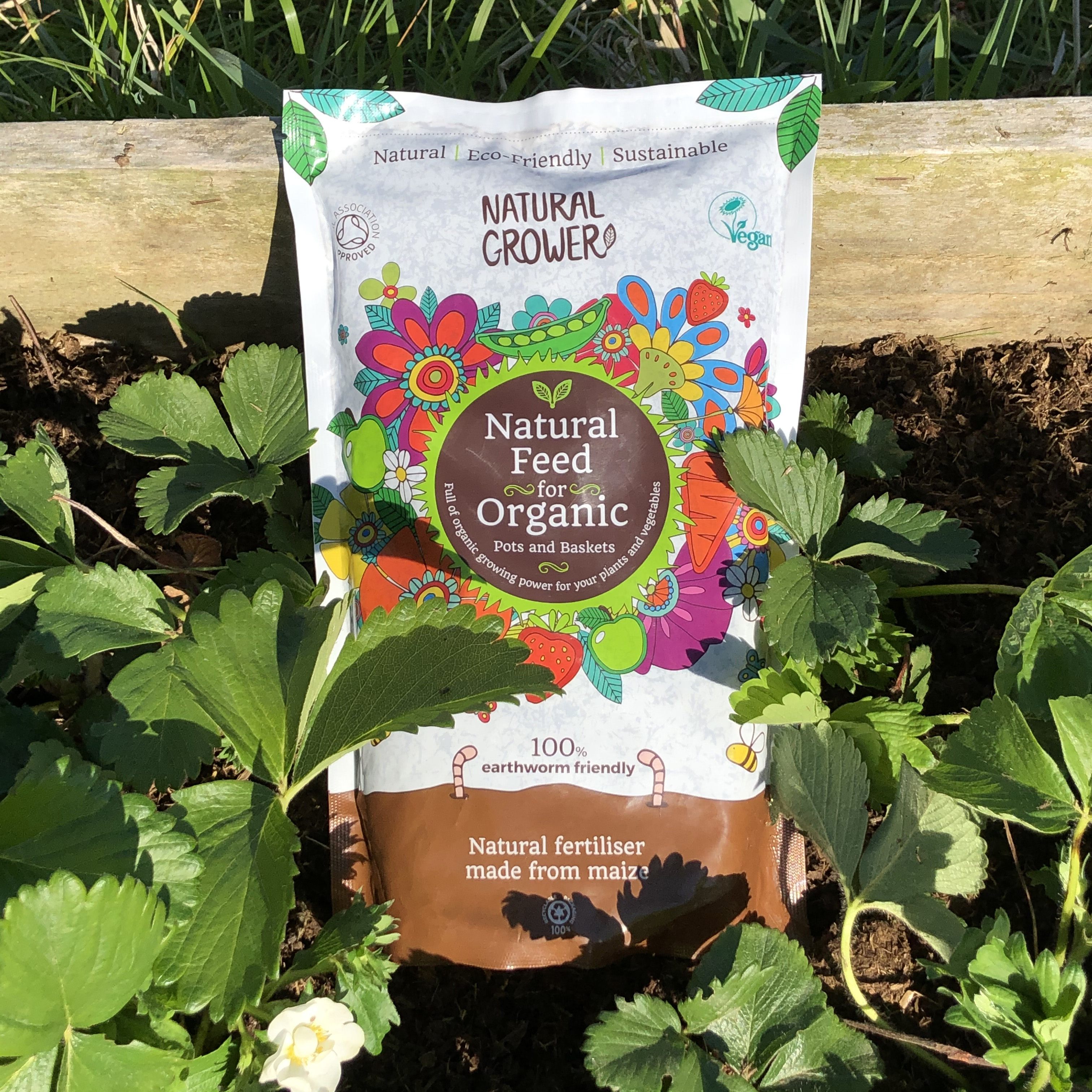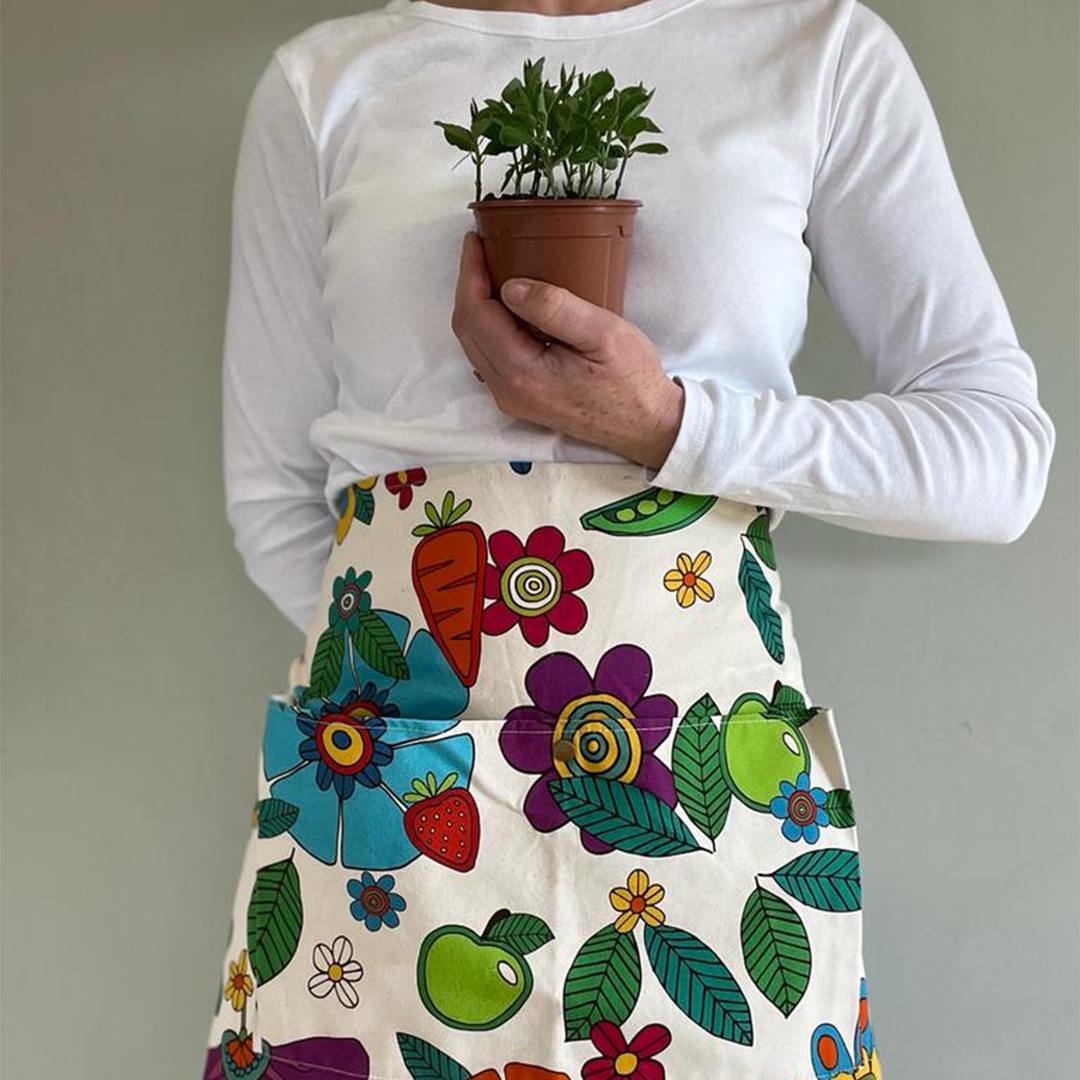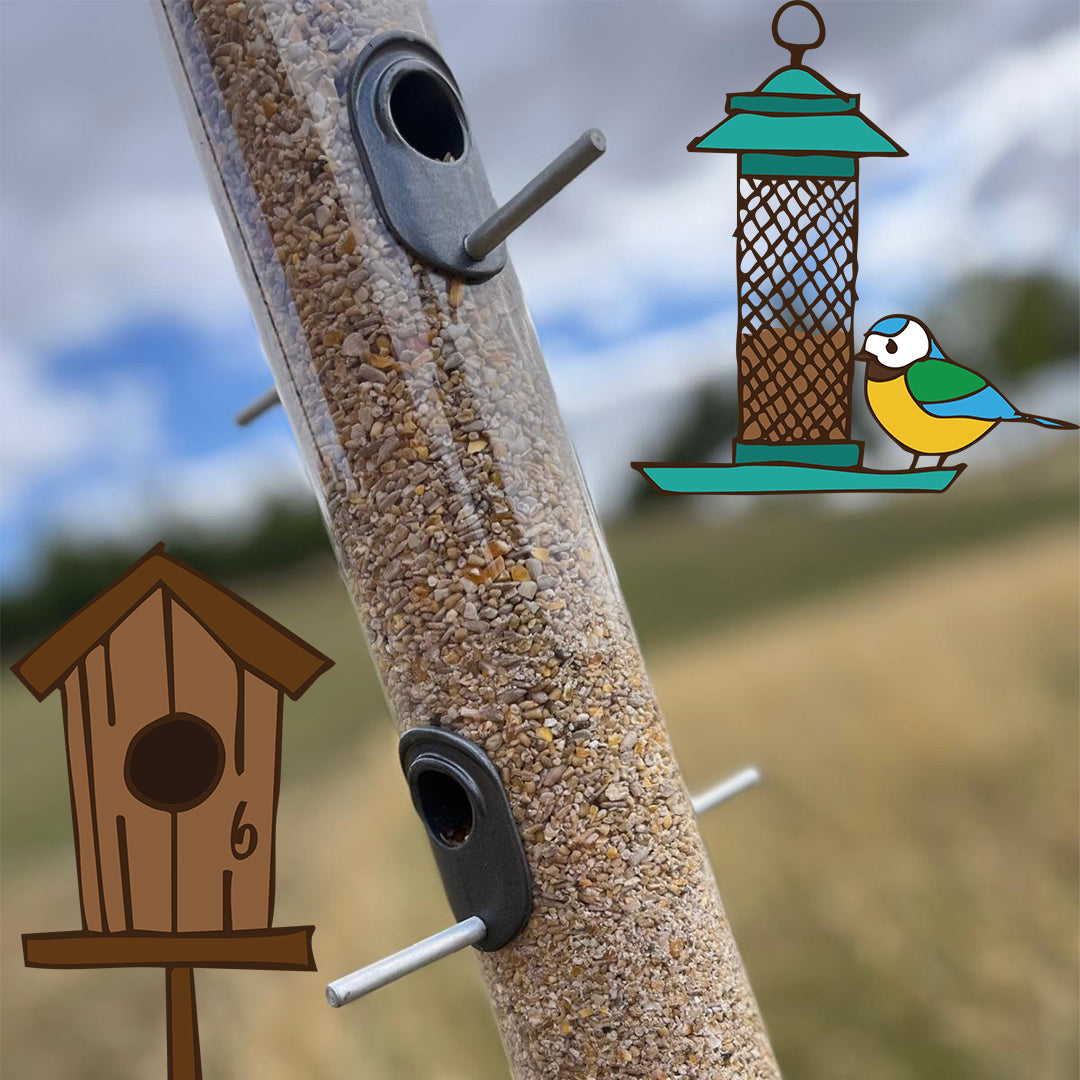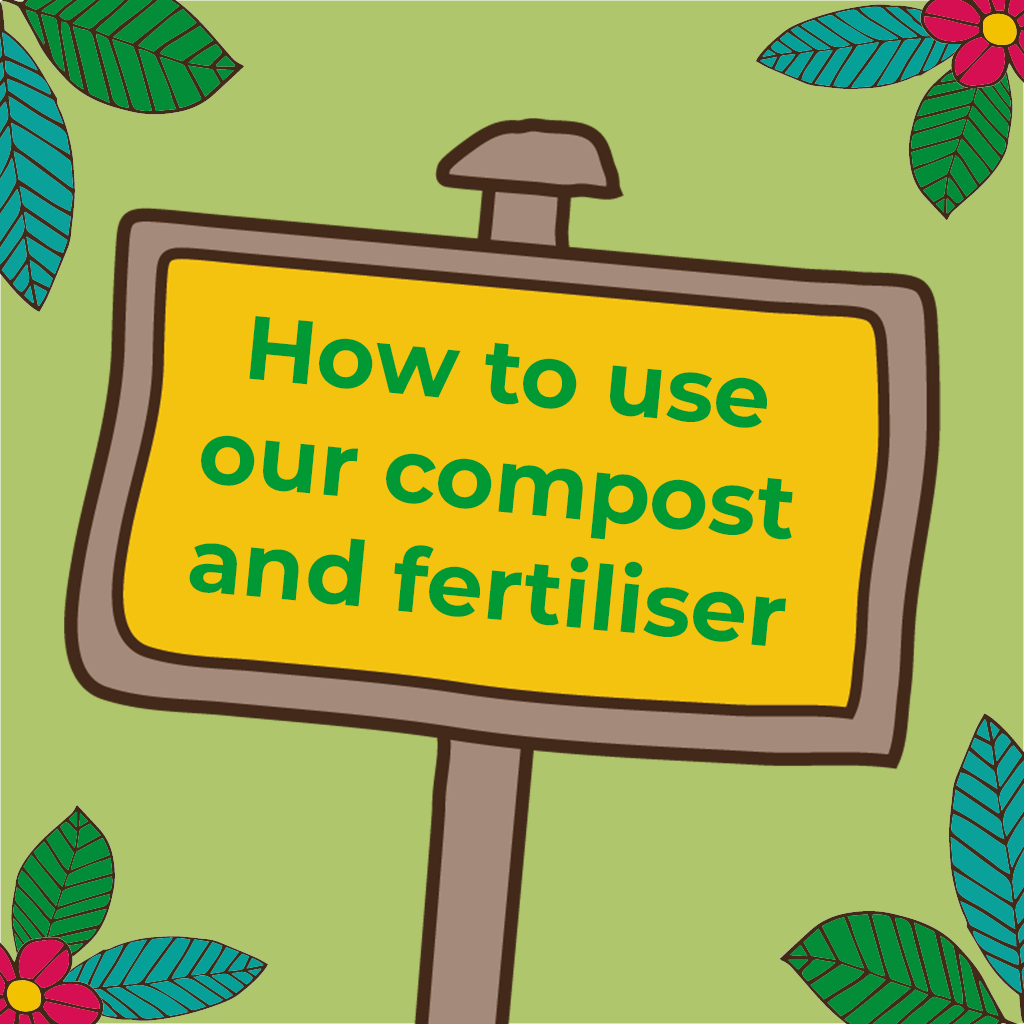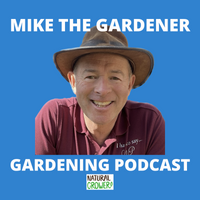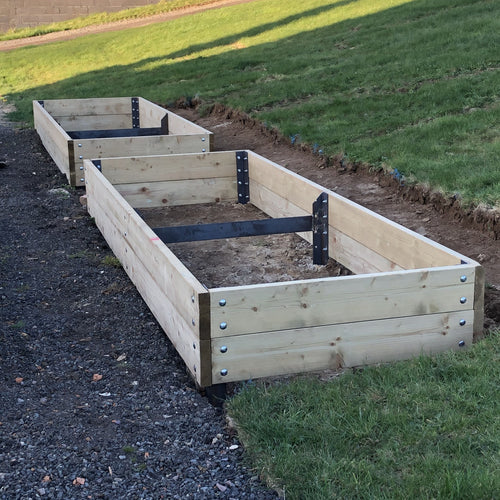
There are a number of benefits to having raised beds for your vegetables, fruits and flowers. They can improve drainage if you have clay soil, and due to the better drainage the soil will warm up quicker in the spring ready for planting out. The soil can be tailored for the plants that you wish to grow in it, for example ericaceous (lime-hating) plants. The soil can also easily be enriched with fertiliser and organic matter to provide perfect growing conditions. Another benefit to having raised beds it that the raised height means less bending over and provides an easier solution to those with mobility issues.
Raised beds can be made to your own specification and size with thick boards and bolts if you have good DIY skills. The beds in the image below were made by my husband and will last us for years!

Raised beds built to last!
If your DIY skills are not up to it, you can buy raised beds made from wood, metal or plastic in garden centres and online. Another option is recycling pallet collars. Pallet collars as shown in the image below are a great size for making raised beds and all the corners and joints are sorted out for you! I have used one in my greenhouse to replace individual grow bags and pots. The pallet collars can be stacked one on top of another so you can make the bed as high as you need it to be. 
A pallet collar waiting to be repurposed!
Pallet collar now a raised bed in the greenhouse
If you are locating the raised bed on grass, the first thing you will need to do is lay cardboard down to kill the grass and and weeds. Don’t use herbicide! Once you have the raised bed in place you can line it with a porous fabric to regulate the drainage, or a plastic fabric to protect the wood. Make sure that any wood you are using has not been treated with chemicals that could leach into the soil. If you are unsure about what the wood may have been treated with you are probably best to line it with some plastic sheet or use empty compost bags to line it.
You can now fill the raised bed with good quality topsoil and mix in our soil conditioner at a rate of ½ topsoil and ½ soil conditioner to add plenty of organic matter and slow release nutrients. Our soil conditioner will also help the raised bed to retain moisture on dry, hot days. Any worms that you find in other beds carefully put into your new raised beds as worms are incredibly beneficial for soil health. Give the bed a good water and get planting!
Head over to our online shop to stock up on our soil conditioner and give your plants and soil a treat.
